|
NATURE'S SIGNS 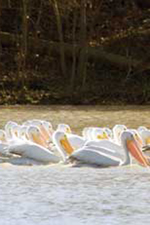
What is "Line Fishing"
NATURE'S SIGNS 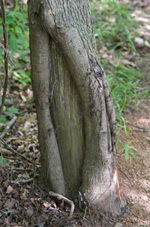
Recognize where alligators may be present
NATURE'S SIGNS 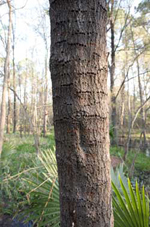
Why a sapsucker drills holes
|
| | |
WILDLIFE
| Alligators, deer, nutria, otters, bobcats, coyotes, and many species of snakes have been spotted in the park. Please do not harass or approach wildlife. | 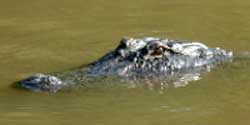 |
There have been no reported injuries from wildlife here. Beware, however. Alligators will aggressively defend their nests during mating and nesting seasons from June through September. Read these tips from Texas Parks and Wildlife on what to do if you see an alligator.
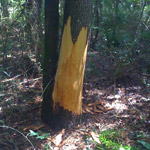 |
Timber rattlers and copperheads are also abundant. They are most often seen in warmer months. You are safest staying on developed trails. Nutria are less common than they once were in the area, but signs of nutria activity can sometimes be seen. Occasionally, nutria will eat the bark at the base of trees, leaving a distinctive scar. (shown left)
|
BIRDING
The Lake Houston Nature Club has nature walks the second Saturday of each month between September and June. There is no charge. Meet at the park entrance at the eastern end of Kingwood Drive at 7:30 AM.
| Many avian species live in the park year round. Others winter here or use the park as a resting place on their migrations. Two large meadows in the park provide food and cover for songbirds during winter months. | 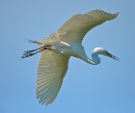 |
Members of the Lake Houston Nature Club and the Houston Audubon Society have documented an incredible 141 species in East End Park. The list keeps growing thanks to KSA and community conservation efforts.
FISHING
The most popular places for fishing are the North Loop Trail and Eagle Point. But you may have to compete with bald eagles that also fish the river.
WATCH OUT FOR:
Deerflies in late spring. The population explodes for 2-3 weeks every year, then seems to vanish. Mosquitoes from April through October, especially after heavy rains. Alligators, especially during the summer months. Do not swim, fish or wade in this area. Gators can hide in as little as eighteen inches of water. And they are faster than Olympic sprinters.
|
Golden Silk (Banana) Spiders often string webs across trails in late fall. They are the largest non-tarantula spiders in North America. Many have leg spans more than five inches wide. They are gentle and beneficial because of all the insect pests they eat including grasshoppers and locusts, but a single female can spin a web across a ten-foot wide trail overnight. Webs are usually 5 - 9 feet above ground. Early morning joggers beware! Poison Ivy exists in several places in the park. It is most prevalent at the edges of trails where sunlight penetrates the forest canopy. It grows as a vine, ground cover and even a bush, and changes its appearance seasonally. You should be safe if you stay on the trails. If you go off trail, learn to recognize and avoid it.
|
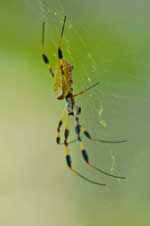 |
|